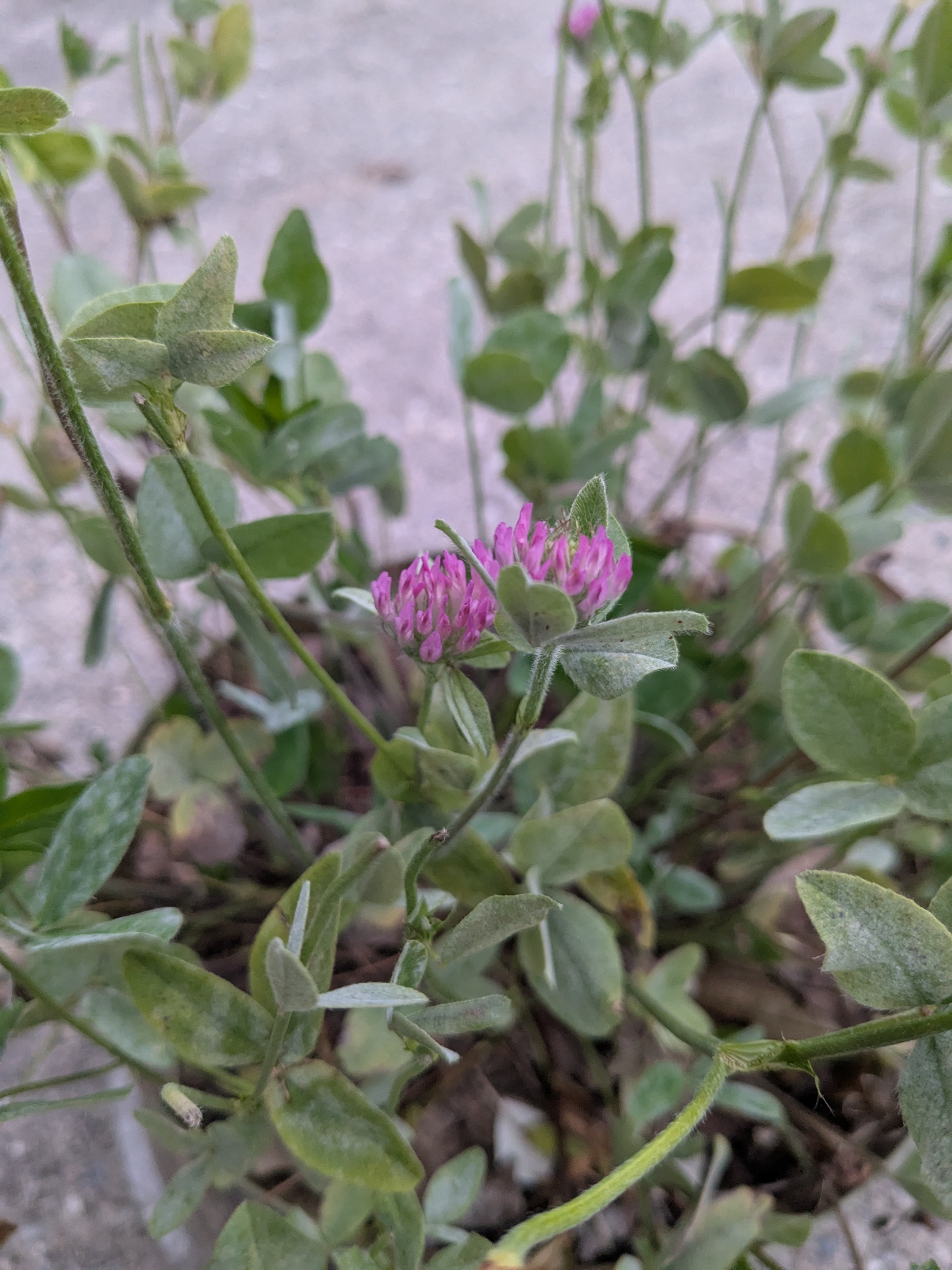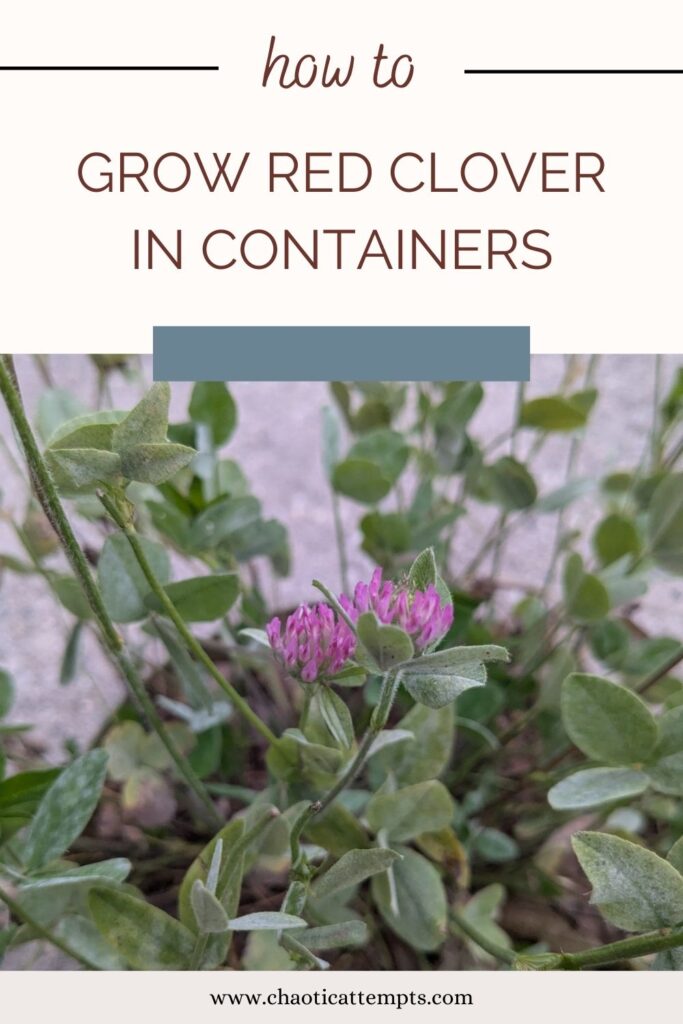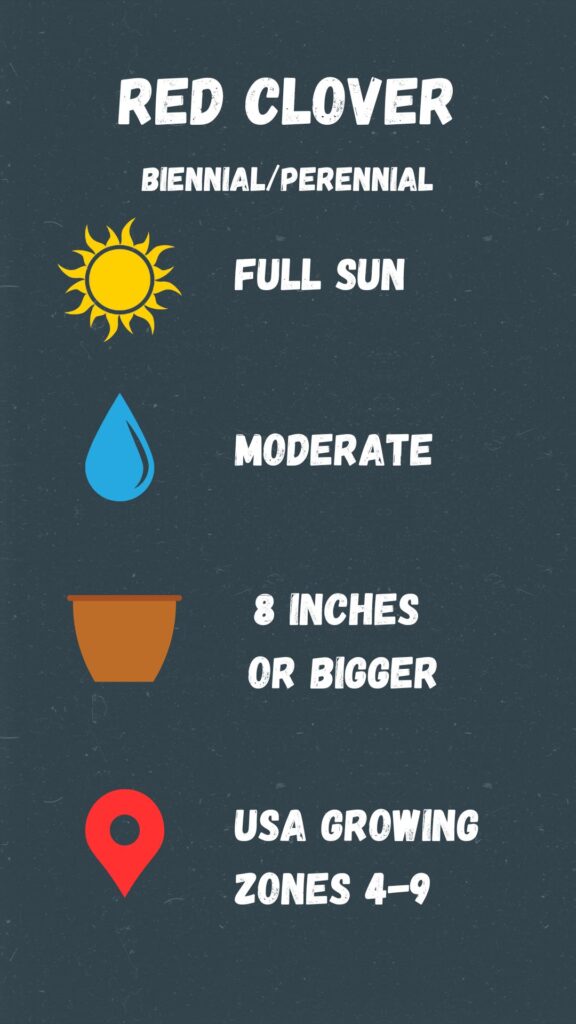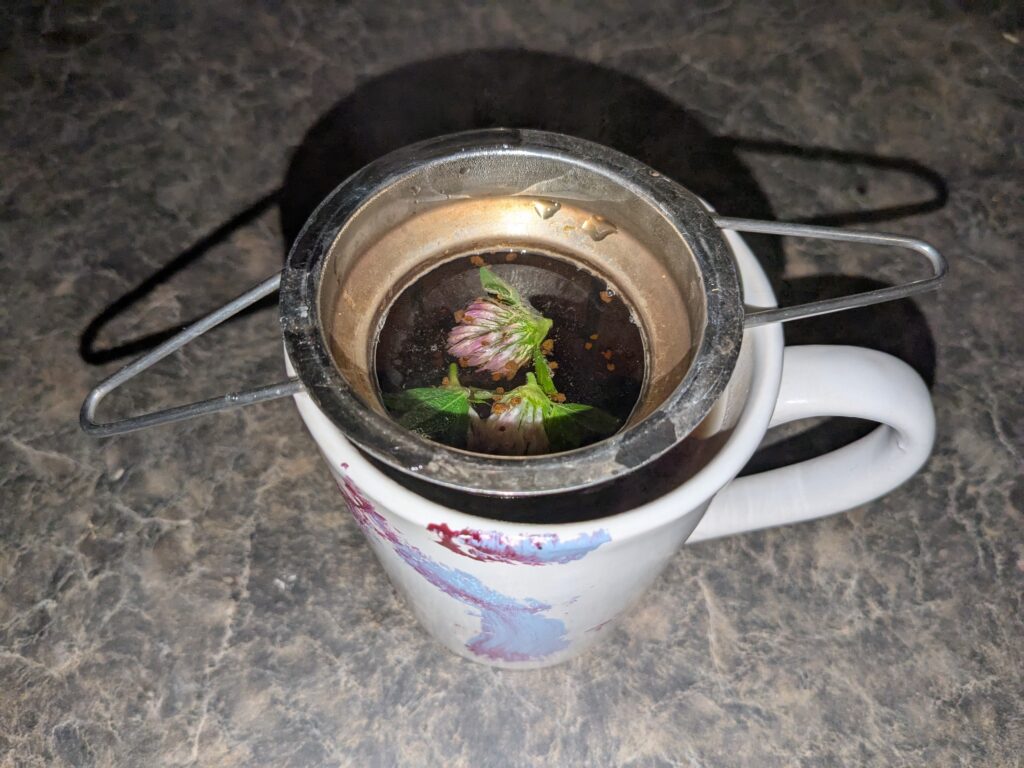Physical Address
304 North Cardinal St.
Dorchester Center, MA 02124
Physical Address
304 North Cardinal St.
Dorchester Center, MA 02124


Red clover (Trifolium pratense) is one of the prettiest “weeds” you’ll find on the side of the road. With it’s quintessential 3-lobed leaves and its globular dark pink flowers it is easy to identify and a great addition to any toddler’s bouquet.
Originally from Europe and Asia, red clover was first introduced to North America in the 1600s. It is considered invasive in some regions of the United States, but for the most part red clover is a naturalized species with plenty of animals that like to chomp on its tender leaves (I’m looking at you bunnies). Today, red clover is considered the premier legume hay crop and is often grown with orchard grass and timothy.
All of that being said, red clover is also edible for people and I grow it in my container garden.

Both the leaves and flowers are edible, but I primarily harvest the flowers. Fresh, they taste like a slightly earthier sugar snap pea. Dry, they make a great addition to any tea and are considered a well known medicinal herb.
Red clover flowers are known for:
Word to the wise, red clover should probably not be taken by those on blood thinners or those breastfeeding/pregnant due to its potential blood thinning properties and how it presents similar to estrogen once ingested. As always, please do your own research before taking any herbal remedy or medicine.
In addition to the medicinal benefits red clover also:
So, that’s why you should add red clover to your home tea garden. Keep reading to learn how.
How to Grow Red Clover
I grow my red clover in containers but you can also grow it directly in the ground. It is most commonly planted from seed and it will become a full grown productive plant in just one season. It is considered a short-term perennial plant which means it will live for multiple years, but normally no more than 5.
Benefits to growing it in containers include:
How to Grow in Containers:

Using Red Clover

The edible parts of red clover are the leaves and flowers.
Some of the most common uses for red clover include:
I think the absolute best way to use red clover is in a simple tea. It adds a slight floral flavor and can be added to any blend. One of my favorites is a Pink Tea that has many medicinal properties but also just tastes good both hot or iced.
Pink Tea
Steep 1 part red clover, 1 part spearmint and 1 part hibiscus in boiled water for 5-10 minutes.

I hope you all have enjoyed this post and I wish you luck and chaos in the garden!
Online Resources:
Books I love:
I am an Amazon Associate and that is reflected in the below affiliate links. I will make a small commission if you purchase the below books with my affiliate link. That being said, please check your local or favorite indie book store for them! I’d much rather you support a small business than give me a kick-back.